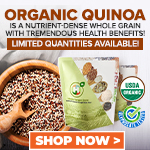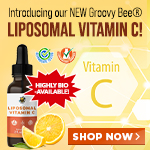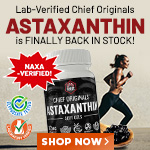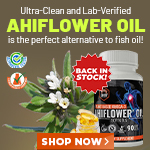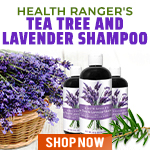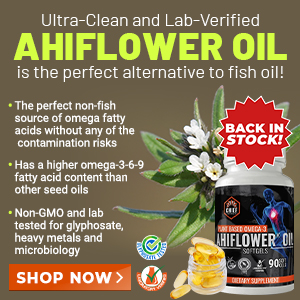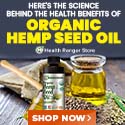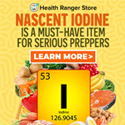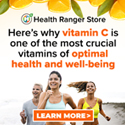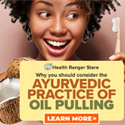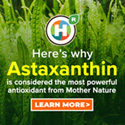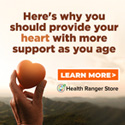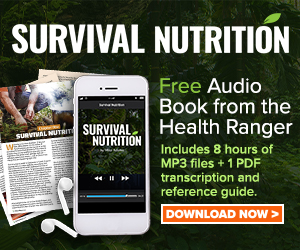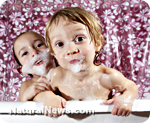
Teens and Toxic Skin Care: A Parent's Responsibility
Monday, November 17, 2008 by: Al G Smith
Tags: skin care, health news, Natural News
- Possible biosignatures detected on Exoplanet K2-18b, raising hopes for alien life
- HHS Secretary Kennedy will likely investigate the following environmental exposures as CAUSES OF AUTISM and brain damage in children
- Biblical truth: God will carry out a “cosmic reset” of Earth and destroy all human civilization with a series of extinction-level cosmic impacts known as The Seven Trumpets, Seven Bowls and Seven Seals
- Trump's bold trade overhaul reaches a crossroads with Italy, as "fair deals" promise sparks global attention
- Scientists debate possibility of TIME TRAVEL, after Trump Admin says new technologies can "bend space and time"
- Kava: The Pacific's healing wonder
- U.S. closes controversial State Department office accused of pushing political censorship under Biden
- M.W. Walbert’s “The Coming Battle” traces the evolution of money power in America
- Russia's migrant dilemma: Balancing security and human rights amid rising xenophobia
- Eat your MEAT! Study finds children need to eat more animal protein for survival and development
- STUDY: Half of vegans at risk of muscle loss due to nutrient deficiencies
- “Wartime Homefront Essential Skills” on BrightU: How to grow and preserve food at home
- Trump chooses negotiation table over Israeli airstrikes in key Iran policy decision
- Aerosolized bioweapons? Strange “diploid biomasses” falling out of the sky in Florida captured under the microscope
- FDA to bar pharma employees from advisory committees
- Russia escalates censorship war, targets over 200 VPN apps amid Google resistance
- New York proposes blockchain integration in public payments
- U.S. demands U.K. protect FREE SPEECH, repeal hate speech authoritarianism, in latest trade deal negotiations
- Aerosolized bioweapons? Strange “diploid biomasses” falling out of the sky in Florida captured under the microscope
- Analysis: The coming economic collapse, a mass uprising and Trump's three secret weapons to halt the growing revolt
- Widespread social and economic unrest: Steve Quayle issues urgent financial warning of imminent asset collapse in new interview with Mike Adams
- Israeli lobbyists boast of controlling US national security policy in leaked AIPAC audio
- Kiss Your Genetic Privacy Good-Bye! 23andMe Gets Green Light to Sell Your Intimate Genetic Details to Anyone They Want
- TAKE IT DOWN Act advances in Congress amid free speech concerns
- Mike Adams releases country western hit single: Goin’ Back in Time is Comin’ Home
- Russia escalates censorship war, targets over 200 VPN apps amid Google resistance
- U.S. lawmakers investigate Meta over alleged China collaboration
- CLOT SHOT PLANDEMIC UNFOLDING: Fibrous, rubbery clots caused by covid injections have prion-like seeding activity
- Warp Speed 2.0: Trump Administration ACCELERATES Gates-funded, self-amplifying bird flu vaccines
- Defunding DEADLY mRNA jabs: Government funding for mRNA technology being scrutinized and sidelined until proven "safe and effective" for real
- Curcumin’s ancient healing power supercharges muscle recovery, and its effects are compounded with anti-inflammatory foods and supplements
- I Want My Bailout Money – new song and music video released by Mike Adams
- Fauci is back in the limelight, and he’s busy promoting a future COVID or FLU pandemic
- I Want My Bailout Money – new song released by Mike Adams
- Trump administration poised to overhaul crypto regulations with new SEC leadership
- Federal employees whine over DOGE's new directive requiring them to do a 5-point summary of weekly accomplishments
- Newly released JFK files reveal Pentagon's role in creating Lyme disease and covid in the same lab
- Analysis: The coming economic collapse, a mass uprising and Trump's three secret weapons to halt the growing revolt
- Aerosolized bioweapons? Strange “diploid biomasses” falling out of the sky in Florida captured under the microscope
- Kiss Your Genetic Privacy Good-Bye! 23andMe Gets Green Light to Sell Your Intimate Genetic Details to Anyone They Want
- Mike Adams releases country western hit single: Goin’ Back in Time is Comin’ Home
- European Court of Justice: Healthcare professionals who promoted or administered COVID-19 vaccines are CRIMINALLY LIABLE for any harm caused
- Widespread social and economic unrest: Steve Quayle issues urgent financial warning of imminent asset collapse in new interview with Mike Adams
- Federal employees whine over DOGE's new directive requiring them to do a 5-point summary of weekly accomplishments
- CLOT SHOT PLANDEMIC UNFOLDING: Fibrous, rubbery clots caused by covid injections have prion-like seeding activity
- U.S. approves new Russian ambassador as diplomatic thaw continues
- I Want My Bailout Money – new song and music video released by Mike Adams
- I Want My Bailout Money – new song released by Mike Adams
- Government waste exposed: Hegseth supports Musk’s demand for accountability from federal workers
- Trump administration poised to overhaul crypto regulations with new SEC leadership
- Defunding DEADLY mRNA jabs: Government funding for mRNA technology being scrutinized and sidelined until proven "safe and effective" for real
- Fauci is back in the limelight, and he’s busy promoting a future COVID or FLU pandemic
- South Carolina Congressman proposes new $250 bill and wants Trump on the front
- Now you can HEAR chemistry: Health Ranger translates molecules into music in stunning video demonstration that will blow your mind (and your ears)
- Red Cross issues warning to stop blood plasma donations from vaccinated people
- Scientists confirm: GENIUS brain function can be spontaneously unleashed in humans without any apparent cause
- EPA advisor admits the agency is funneling billions to climate groups ahead of Trump’s return to White House
- HYSSOP: What research reveals about the health benefits of this ancient holy herb
- Two containers with completed ballots fall out of truck in Florida
- Mike Adams releases country western hit single: Goin’ Back in Time is Comin’ Home
- Newly released JFK files reveal Pentagon's role in creating Lyme disease and covid in the same lab
- Global leaders unite to clamp down on “misinformation” with UN-backed Cascais Declaration
- BREAKING: 2025 NDAA authorizes mandatory military draft of WOMEN across America… as Pentagon pursues global NUCLEAR war with both Russia and China at the same time
- I Want My Bailout Money – new song released by Mike Adams
- Michael Yon warns of a ZIONIST TAKEOVER in Trump’s second administration
- The Health Ranger releases “Vaccine Zombie” song and music video, using AI-animated zombies for the music video
- Ozempic and Wegovy weight loss drugs are injectable LIZARD VENOM PEPTIDES that may unleash a devastating wave of organ failure… side effects align with symptoms of SNAKE BITES
- BOMBSHELL: DNA testing kits are a SCAM to develop ethnic-specific bioweapons
- Israeli soldiers accused of even more torture and abuse in the West Bank
- These 13 countries just signed an agreement to engineer a global FAMINE by destroying food supply
- RFK Jr. clears key hurdle: Sen. Susan Collins backs controversial HHS nominee, signaling a new era for health policy
- NASA admits that climate change occurs because of changes in Earth’s solar orbit, and NOT because of SUVs and fossil fuels
Disturbing news has recently emerged from the ongoing research published by the respected Environmental Working Group (EWG) in September 2008, that parents need to take note of. If you have teenagers, in particular, you will know that they are at a difficult and vulnerable time of life, when their own bodies are in a state of turmoil and constant development. Amongst the numerous challenges of impending adulthood is the development of natural body-smells, and minor skin eruptions, caused by glandular and hormonal disturbances, which can make any teenager feel self-conscious. These issues can lead to many teens being liable to apply deodorants liberally and frequently, and also to use a variety of commercial creams and lotions. Teenagers are also tempted to experiment with all sorts of cosmetics without paying much attention to the ingredients used to manufacture them.
The EWG`s research has confirmed that teenagers do indeed use more `substances` on their skins than the average person. This means that during this vulnerable physical and emotional time they can be exposed to a whole host of potentially harmful chemical components regularly used in the manufacture of body, skin and hair product in the majority of typical, off-the-shelf brands.
If you are the main provider of skin, hair and body care products for your children to use then it is your direct responsibility as a parent to ensure that you are using the safest products available – even if these safer alternatives do cost a little more. Surely no parent would want to justify continuing to provide something that might be slowly poisoning their children`s skin and bodies.
If ignorance is truly bliss than perhaps this is the excuse for those parents who are less proactive about getting adequately informed. Perhaps they simply do not know or realize what an array of toxic chemicals are commonly found in the products that their child or teenager may be using every day. For others, perhaps they are happy to accept the claims made by certain `official` sources - often with politically and/or commercially invested interests to protect - that currently there is insufficient evidence of any harm that these products or ingredients might cause.
Most responsible parents will go out of their way to make sure that they are adequately informed so that they can properly care for their offspring. When this is not the case not, it begs the question: "how soon does such an attitude become tantamount to neglect?" Only an individual parent`s conscience can provide the answer, perhaps.
But if this helps you to make more informed purchasing decisions, or to make more strenuous efforts to inform and educate your own teens about their personal shopping practices, you should be aware that EWG research has shown that teens tend to use an average of 17 body/skin/cosmetic products a day compared with adult use of an average of 12 products. The study indicated that, across the United States, teenage girls are already typically contaminated with a wide variety of known toxic chemicals routinely used in many personal care and cosmetic formulations. Some of the toxic ingredients identified at elevated levels in blood and urine samples included:
Phthalates – Often used in the manufacture of plastic products, they can be absorbed both into susceptible products and also the body via various means. Known to be toxic (though played down by `official Government sources`) phthalates are potentially cancer causing and disruptive to natural hormones and may affect normal gender development and fertility.
Triclosan – Widely used in liquid hand soaps, toothpaste, anti-bacterial creams and other so-called `body care` products. It is a chlorophenol that is registered as a `pesticide` by the US Environmental Protection Agency. It progressively increases in its toxic potential through accumulation as it is very hard to get rid of once absorbed by the body. It is known to cause cause irritations, trigger allergic reactions and is also potentially carcinogenic in humans.
Parabens – A `family` of carcinogenic chemicals (e.g. methylparaben; propylparaben and others), These chemicals are also known to have disruptive effects on hormones and they were found in all of the sample of 20 teenage girls studied by the EWG.
Fragrances – Synthetic fragrances such as `musk` are frequently used in the popular, cheaper brands of perfumes, toiletries and cosmetics (typically favored by pocket-money-spending teens), These synthetic perfumes can trigger allergies and sensitivities, and have also been shown to cause cancers in mice.
These are just a `handful` of common constituents found in many personal care products - ranging from soaps, deodorants, hand lotions, body creams, toothpastes, anti-microbial blemish creams, and so on, right through to cosmetics of all kinds.
As yet there are still relatively few skin, hair and body care products on the market that can truly claim to be safer alternatives for adults to use, let alone vulnerable teens and younger children. This is because the majority of off-the-shelf products rely heavily on synthetic chemical for preservation, coloring, fragrance and as `bulking` agents, amongst other things. Some truly natural product ranges are, however, emerging but they have to be hunted-down. With effort you can find new, ethically-inspired brands that utilize the wisdom of ages and entirely natural formulations to ensure their preservation and safety for use for all age-groups. For example, you might browse the information about the certified organic products supplied via http://www.saferalternative.com, and examine the product range originally formulated through the diligence of one concerned Mother who knew she wanted to be absolutely certain that the products her three children used were as safe as could be humanly produced.
But do not make the bland assumption that every other product on the high-street, or online, that calls itself 'natural' or 'organic' actually lives-up to the apparent claims or implications made by marketing campaigns, brand names and images. Only by reading the small print, specifically the ingredients label, on your body, hair and skin care products, can you become properly informed about what is really used in their manufacture.
Even so, the ingredients listings on many labels, regularly prove to be barely legible, and will often contain items that are either hard to decipher, and even more difficult to pronounce. Another trick that manufacturers frequently use in listing ingredients is to `imply` natural derivations by mentioning natural-sounding words and phrases. It is up to every parent to do their due diligence and familiarize themselves with the names and potential health risks associated with common components in hair, skin, body care and cosmetics. For this purpose (if, as a regular Natural News reader, you do not have it already) a free ebook is downloadable from: http://www.gonando.com/healthier-lifestyle-e... that lists and identifies the major toxic, synthetic chemical ingredients of particular concern that could appear on your personal care labels.
It is never easy to educate or inform teenagers – who naturally `know it all` already. But if you can persuade your teen to read a resource that allows them to learn for themselves about the health risks posed by some of the ingredients in their favorite skin care and cosmetics products, you might just help them to avoid unnecessary, further exposure to toxic substances that could potentially cause their health to suffer in years to come.
Sources:
http://www.ewg.org/reports/teens
http://en.wikipedia.org/wiki/Phthalate#Healt...
http://www.mindfully.org/Pesticide/Synthetic...
http://www.gonando.com/triclosan.html
About the author
Al G Smith MSc BSc - Has been working and teaching in the food related sector for over 30 years and is currently a website publisher (http://www.gonaturalandorganic.com) and Independent Representative for the World's first extensive range of Certified Organic skin care and cosmetics (http://www.saferalternative.com).Skin care at FETCH.news
Get independent news alerts on natural cures, food lab tests, cannabis medicine, science, robotics, drones, privacy and more.
Take Action: Support Natural News by linking to this article from your website
Permalink to this article:
Embed article link: (copy HTML code below):
Reprinting this article:
Non-commercial use OK, cite NaturalNews.com with clickable link.
Follow Natural News on Facebook, Twitter, Google Plus, and Pinterest
Science News & Studies
Medicine News and Information
Food News & Studies
Health News & Studies
Herbs News & Information
Pollution News & Studies
Cancer News & Studies
Climate News & Studies
Survival News & Information
Gear News & Information
News covering technology, stocks, hackers, and more



"Big Tech and mainstream media are constantly trying to silence the independent voices that dare to bring you the truth about toxic food ingredients, dangerous medications and the failed, fraudulent science of the profit-driven medical establishment.
Email is one of the best ways to make sure you stay informed, without the censorship of the tech giants (Google, Apple, Facebook, Twitter, YouTube, etc.). Stay informed and you'll even likely learn information that may help save your own life."
–The Health Ranger, Mike Adams












